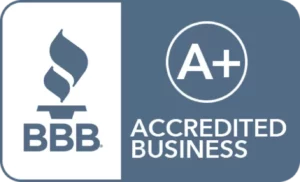When deciding on a Roth IRA conversion, there are a lot of important factors to consider. These include your age, your income and your expectations about future tax rates. For many people, a Roth IRA conversion makes a lot of sense. However, others might be better off leaving their funds in a traditional IRA. In the following, we’ll give you the benefits and risks of a conversion so you can better understand your choices.
What is a Roth IRA?
For those who don’t know, a Roth IRA is a type of Individual Retirement Account. The major difference between a Roth and a traditional IRA is when your money is taxed. Traditional IRAs are funded with pretax money. Generally, you receive an immediate tax break during the year(s) you make a contribution. For example, if you earned $50,000 in a year and contributed $5,000 to a traditional IRA, you will only be taxed on $45,000. On the other hand, Roth IRA contributions are made after-tax. While there is no upfront tax break, all qualified distributions are tax-free!
There are two factors that need to happen to make a Roth IRA distribution tax-free. First, you must be at least age 59 1/2 and second, the account must be open for at least five years. Provided these conditions are met, any withdrawal from your Roth IRA will not be taxed. Further, any contributions you have made to the plan can always be withdrawn tax- and penalty-free. However, earnings will be subject to taxes and the 10% early withdrawal penalty. There are exceptions that allow for tax-free “non-qualified” distributions. These conditions include first time home purchases, higher education expenses and certain medical expenses, among other things.
Roth IRA Conversion Rules
If you already contribute to a traditional IRA or a workplace retirement plan, such as a 401(k), you can convert that to a Roth IRA. The one caveat when converting to a Roth is that you have to pay taxes on the amount you convert. For example, if you decide to convert $10,000 from your traditional IRA to a Roth IRA and you are in the 22% tax bracket, you will need to pay $2,200 in taxes. This is because any amount converted is added to your earned income for the year.
The easiest way to convert is via a trustee-to-trustee transfer of funds. To do so, you direct your current trustee to direct your traditional IRA funds to the new trustee of your Roth IRA. If you are not changing financial institutions for your conversion, you can simply tell your current trustee that you want to open a Roth IRA and fund it with a transfer. The other way of converting your traditional funds to a Roth is by taking a check and contributing to the Roth IRA yourself. However, the 60-day rollover rule is in effect. You have 60 days to get that money into the new Roth account or it will be deemed a distribution and you will owe taxes on the untaxed amount. You will also be hit with the early withdrawal penalty if you are not at least age 59 1/2.
Why Should You Convert?
The most important reason for converting is the exciting opportunity of tax-free funds during your retirement. Roth IRA conversions allow you to pay the taxes now and not have to worry about them in the future. Another great advantage, and an important estate planning tool, is that there are no Required Minimum Distributions. It’s the only tax-sheltered plan that does not require you to withdraw money from the account, ever! This allows you to pass on the tax benefits to your beneficiaries, though the SECURE Act might look to change that.
Moreover, it’s a good way to diversify your funds. Utilizing both traditional and Roth plans allow you to hedge against tax rates. You don’t know what tax rates will be a year or two from now, let alone 20 or 30. Having money in both types of accounts allow you to take advantage of current (known) tax rates and future (unknown) rates.
Finally, Roth IRAs come with income restrictions. If you make too much money, you cannot directly contribute to one. For example, in 2023, if you are a single filer and make more than $153,000, you cannot contribute to a Roth IRA. But what if you want the benefits of tax-free retirement income? The only way to get money into a Roth is through a conversion (unless you want to take a pay-cut!). There are no income restrictions on converting to a Roth IRA.
Things to Consider
As we’ve said, there are several determining factors you should consider before a Roth IRA conversion:
How Old are You?
The key benefit is the tax-free growth of the Roth IRA. The younger you are, the more you can take advantage of this. If you are close to retiring and will need that money to live off of, then it probably isn’t worth it. You might need several years to recoup the taxes you have to pay on the conversion.
How Much Do You Earn?
Obviously, the more money you make, the higher your tax bracket is. High earners might want the immediate tax break a traditional plan affords them. However, if you haven’t reached your max earning potential, and therefore in a lower tax bracket, the tax-break might not be as important to you. It’s also important to keep in mind what tax bracket your future self will be in when you want your IRA money. If you think it will be higher, than converting is a good idea.
How Will You Pay the Taxes?
Since you have to pay the taxes on the amount converted, you need to know where that money will come from. You don’t want to use your retirement funds to pay them. And you certainly don’t want to take out a high interest loan to pay them either. It’s best if you have the cash on hand that is earmarked for taxes. One thing to strongly consider is to stretch out your conversion over several years. This way, the tax bite doesn’t come all at once.
Will You NEED the Money When You Retire?
We mentioned RMDs and estate planning earlier. As it stands now, beneficiaries can choose to take inherited Roth IRA distributions throughout the course of their lives. This is great for younger beneficiaries, such as your children. These rules might get tweaked soon, but it’s still a great option if you wont need the money personally. Since there are no RMDs, you may continue to contribute to a Roth IRA as long as you can, and not have to withdraw anything.
The Passing of a Spouse
When one spouse passes, it leaves the other in a much different tax situation. When your filing circumstances change (i.e. going from married filing jointly to single filer), you are tasked with a different set of numbers to be aware of. Further, if you inherit the descendants’ retirement plan and are subject to RMDs, you may be hit with an even higher tax bill during retirement. Converting to a Roth beforehand can help alleviate the stress of an already impossible situation.
Conclusion
Whether you are young and seeking tax-free growth of your retirement plans or are worried about future tax rates, it might be wise to do a Roth IRA conversion. This is not a one-size-fits-all situation since everyone is unique. It’s always best to consult with a tax professional to help you through the process.
Feel free to contact us if you have any questions at 800.472.1043.











